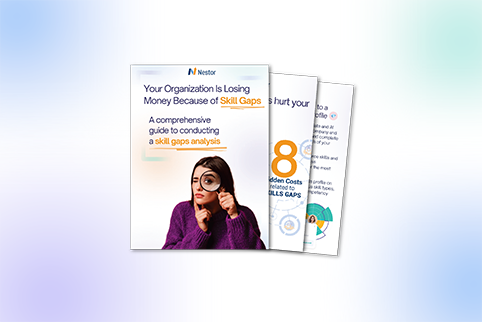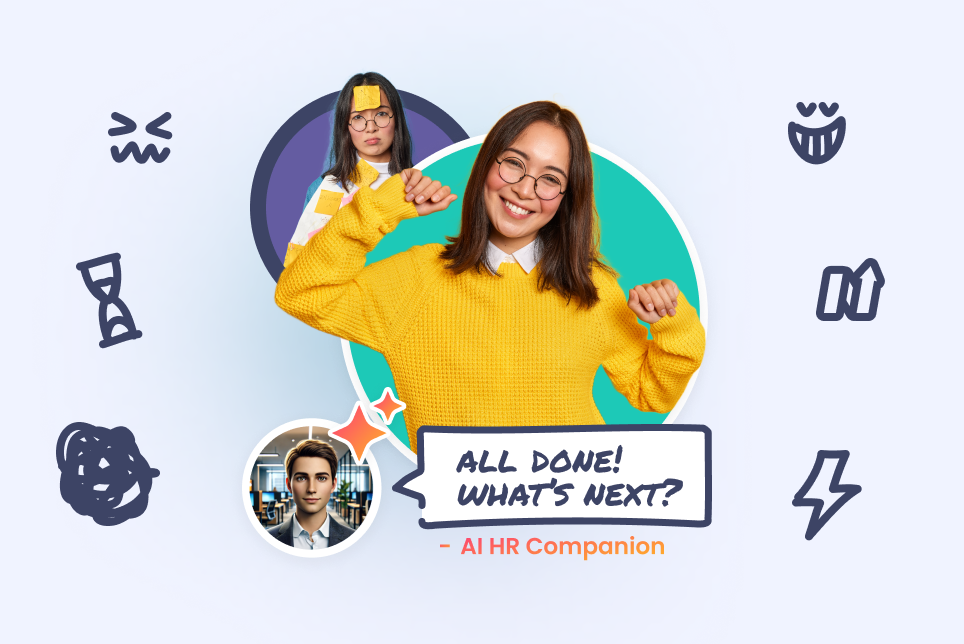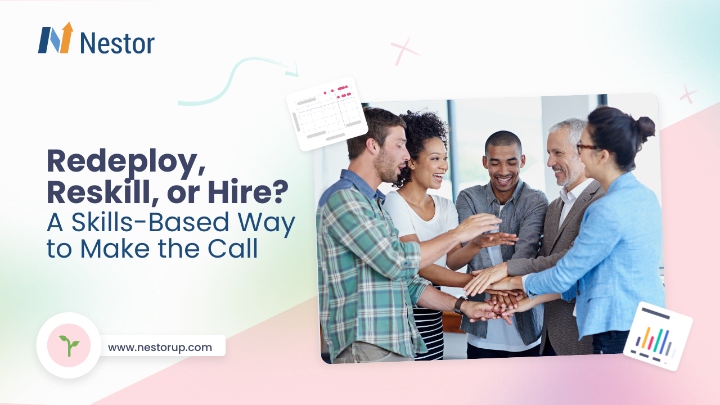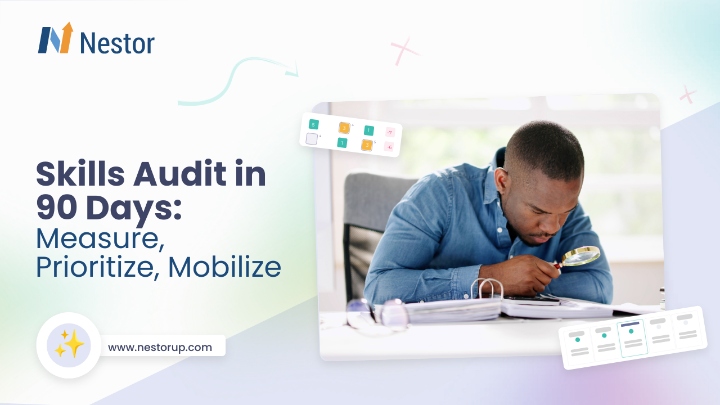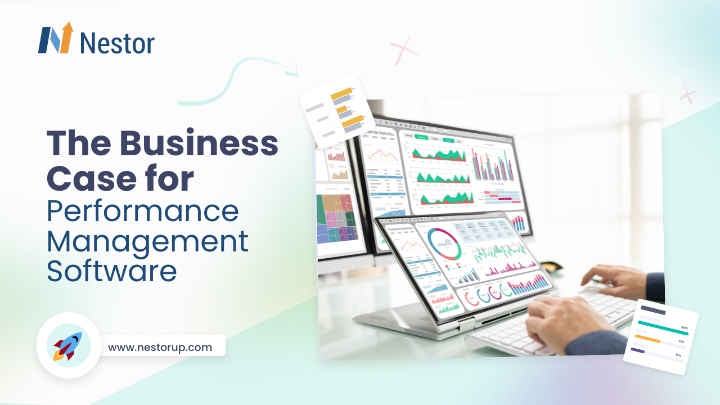Strategic Workforce Planning 101: From Basic Concepts to Advanced Strategies
22 min read
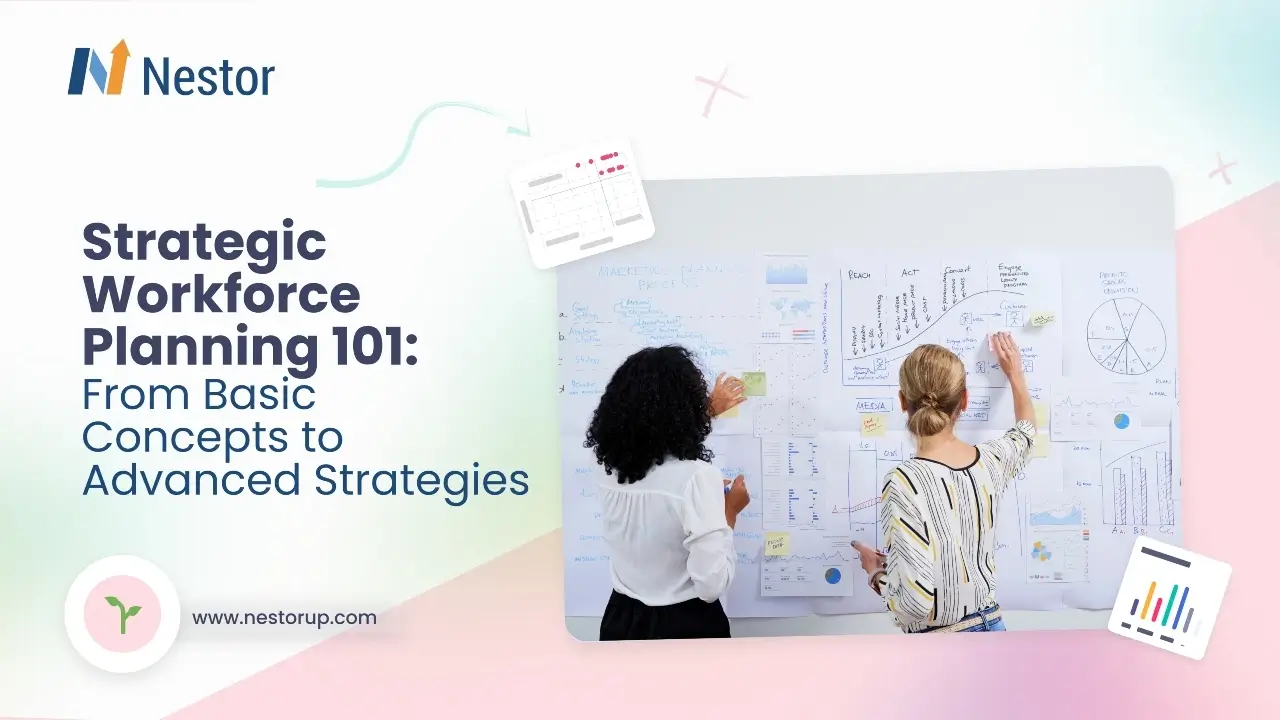
Contents
In a world obsessed with the next big hire, the most powerful talent solution might be hiding in plain sight: strategic workforce planning (SWP). The business landscape is transforming at lightning speed. Technology evolves overnight. Skills that defined careers for decades become obsolete in months. Employee expectations have fundamentally shifted.
With 73% of executives reporting skills shortages in their organizations according to recent industry research, the need for systematic workforce planning has never been more urgent.
Yet most companies still approach workforce planning like it’s 1995; reactive, disconnected from business strategy, and focused on headcount rather than capabilities.
The cost of this approach? Constant whiplash between urgent hiring campaigns and painful reductions. Skyrocketing recruitment expenses. Critical projects derailed by talent shortages. And a workforce perpetually misaligned with where your business is heading.
Strategic workforce planning flips this broken model on its head.
Instead of reacting to talent emergencies, forward-thinking leaders are designing talent ecosystems that anticipate change. They’re mapping future skill requirements against current capabilities. They’re building talent pipelines before positions open. They’re creating internal mobility pathways that keep institutional knowledge from walking out the door.
The result? These organizations can shift direction in weeks, not quarters. They maintain consistent productivity through market upheavals. They attract top talent through reputation alone. And they do it all while maintaining healthier profit margins than their talent-reactive competitors.
The divide is growing between companies that strategically architect their workforce and those that simply manage headcount. Which side are you on?
Let’s explore how strategic workforce planning works, why traditional approaches fail, and how to build a system that turns talent into your ultimate competitive advantage.
What Is Strategic Workforce Planning?
Strategic workforce planning is a methodical process that aligns workforce capability and capacity with organizational objectives over the medium to long term. It goes beyond simple headcount planning or annual hiring forecasts.
While traditional workforce planning focuses primarily on meeting current staffing needs, strategic workforce planning looks ahead. It anticipates future business requirements and ensures the talent pipeline can support those needs.
SWP requires collaboration across multiple departments:
- HR teams provide workforce data, insights on talent trends, and implementation expertise
- Leadership sets business direction and confirms workforce implications of strategic goals
- Data analysts transform workforce metrics into actionable intelligence for decision-making
- Finance provides budget parameters and helps quantify workforce investments
- Department managers offer frontline insights about skill needs and work changes
The strategic workforce planning process connects these perspectives to create an integrated approach to talent management. At its core, strategic workforce planning answers these essential questions:
- What talent do we need to execute our business strategy?
- What talent do we currently have?
- How do we close the gaps between current and future states?
- What risks exist in our workforce profile?
- How should we prioritize our talent investments?
Why Strategic Workforce Planning Is Essential
Adapting to Market Changes
Organizations face constant disruption from automation, digital transformation, and new work models. Companies that predict and prepare for these shifts gain competitive advantage. SWP provides a framework to analyze external trends and adjust workforce strategies accordingly.
The rapid shift to remote work during the pandemic demonstrated how quickly workforce models can change. Organizations with robust planning capabilities adapted faster and experienced less disruption.
Market changes that impact workforce planning include:
- Emerging technologies that create new skill requirements
- Evolving customer expectations that shift service delivery models
- Competitor actions that require new capabilities
- Regulatory changes that affect workforce compliance requirements
- Labor market shifts that alter talent availability
Strategic workforce planning creates structured approaches to monitor and respond to these forces.
Bridging the Talent Gap
Many industries struggle with critical skills shortages. An aging workforce, high turnover rates, and evolving job requirements create persistent talent gaps.
Strategic workforce planning identifies these gaps before they become problematic. It creates structured approaches to build internal talent pipelines and target external recruitment efficiently.
The talent gap affects organizations in multiple ways:
- Delayed product launches due to staffing shortages
- Quality issues from inadequate skill levels
- Excessive overtime costs to meet deliverables
- Loss of business opportunities due to capacity constraints
- Employee burnout from understaffing
By anticipating these issues, organizations can implement proactive solutions rather than costly reactive measures.
Optimizing Labor Costs
Labor typically represents 40-70% of operating expenses for most organizations. Strategic workforce planning optimizes this investment by:
- Matching workforce size to actual business needs
- Balancing permanent and contingent staffing
- Reducing reactive hiring that often comes at premium costs
- Minimizing unplanned overtime and temporary staffing
- Right-sizing teams based on productivity analysis
- Identifying opportunities for automation or work redesign
- Aligning compensation strategies with market conditions
Enhancing Employee Engagement
When organizations plan workforce needs strategically, they create clearer career paths for employees. This transparency helps workers understand how they can grow within the company.
Employees with access to development opportunities aligned with business needs report 34% higher engagement scores, according to research by Gartner.
Strategic workforce planning improves engagement through:
- Greater role clarity and purpose connection
- More targeted development investments
- Internal mobility opportunities that match employee aspirations
- Recognition of emerging skills that employees value
- Reduced uncertainty during business transitions
These engagement benefits translate directly to improved retention, productivity, and customer service.
Mitigating Risks
Strategic workforce planning reduces several organizational risks:
- Knowledge loss when key employees depart
- Leadership gaps due to insufficient succession planning
- Compliance issues from improper workforce management
- Business continuity threats during crises or major transitions
- Excessive reliance on individual subject matter experts
- Unsustainable workloads that lead to quality problems
- Demographic imbalances that create future talent cliffs
The Key Components of Strategic Workforce Planning
Workforce Analytics & Data-Driven Decisions
Modern SWP relies on robust data analysis. Organizations must track and analyze:
- Historical workforce trends
- Current workforce composition
- Performance metrics
- Turnover patterns
- Cost analytics
- Labor market intelligence
- Productivity measures
- Employee sentiment and engagement data
These insights form the foundation for evidence-based workforce decisions rather than intuition or past practices.
The quality of workforce analytics has improved dramatically with new technologies. Organizations can now process massive amounts of workforce data to identify patterns that would be impossible to spot manually.
This analytical foundation enables more precise interventions and resource allocation decisions. For example, a retail organization used analytics to identify specific stores with engagement challenges and implemented targeted leadership development rather than a costly company-wide program.
Skills Mapping & Competency Planning
Understanding the skills currently available in your organization compared to future requirements allows for targeted development strategies.
Skills mapping involves documenting existing capabilities across your workforce and identifying critical competencies needed for business success. The resulting gap analysis drives training programs, recruitment focus, and technology investments.
A comprehensive skills framework includes:
- Technical skills specific to roles and functions
- Industry knowledge and domain expertise
- Leadership capabilities at various organizational levels
- Digital literacy and technology adaptation capabilities
- Business acumen and commercial awareness
- Adaptability and learning agility
The process of skills mapping creates a common language for talent discussions across the organization. It allows leaders to speak precisely about capability needs rather than using vague terms like “not enough talent.”
Technology company IBM maintains a dynamic skills inventory that tracks both verified skills and self-reported capabilities. This system allows them to redeploy talent quickly as project needs change, reducing external hiring costs and providing growth opportunities for employees.
Talent Acquisition & Retention Strategies
Strategic workforce planning informs both how you bring talent into the organization and how you keep valuable employees engaged.
Recruitment becomes more targeted and proactive, moving from “just-in-time” hiring to building talent pipelines for critical roles. Retention strategies focus on the employee segments most important to business success.
Effective talent acquisition strategies might include:
- University partnerships focused on specific disciplines
- Apprenticeship programs for technical roles
- Career transition programs for adjacent industries
- Recruitment marketing targeted at passive candidates
- Employee referral programs with skill-specific incentives
- Diversity-focused sourcing initiatives
Retention strategies become equally targeted:
- Stay interviews with high-performing employees
- Personalized development plans for critical talent
- Mentoring programs that build organizational connection
- Project opportunities that match career aspirations
- Competitive compensation reviews for high-demand skills
- Work flexibility options aligned with employee preferences
Financial services firm Capital One maps retention risk against business impact to prioritize retention efforts. This targeted approach allows them to invest retention resources where they matter most rather than applying one-size-fits-all approaches.
Diversity, Equity, and Inclusion (DEI) in Workforce Planning
Effective SWP incorporates DEI goals throughout the planning process. This integration ensures diverse talent pipelines, equitable development opportunities, and inclusive work environments.
Organizations with diverse workforces outperform their competitors financially and demonstrate greater innovation capability. Strategic workforce planning provides the structure to achieve meaningful diversity progress tied to business outcomes.
DEI integration in workforce planning includes:
- Analyzing representation data against market availability
- Identifying barriers in hiring and promotion processes
- Setting specific diversity goals for different organizational levels
- Monitoring inclusion metrics through engagement surveys
- Creating talent acceleration programs for underrepresented groups
- Addressing potential bias in talent assessment and development
Technology company Microsoft uses workforce analytics to track representation progress quarterly and ties executive compensation to diversity outcomes. This approach embeds DEI goals directly into workforce strategy rather than treating them as separate initiatives.
Workforce Flexibility & Future-Proofing Talent Needs
The modern workforce includes a mix of traditional employees, contingent workers, contractors, and automated systems. Strategic workforce planning addresses this complexity by looking at total workforce solutions rather than just employee headcount.
This component also includes scenario planning to prepare for alternative futures, creating workforce agility to respond to changing conditions.
Workforce flexibility strategies include:
- Core/flexible workforce models that scale with business cycles
- Internal talent marketplaces that deploy skills across departments
- Cross-training programs that build multiskilled employees
- Job sharing and alternative work arrangements
- Strategic use of contractors for specialized expertise
- Digital workforce solutions that complement human capabilities
Professional services firm PwC implemented a flexible staffing model based on strategic workforce planning. Partners can access talent through multiple channels—permanent staff, contractors, or specialized consulting teams—depending on project requirements and client needs.
The Strategic Workforce Planning Process: A Step-by-Step Guide
Step 1: Define Business Goals & Workforce Strategy
Strategic workforce planning begins with understanding business objectives. Work with leadership to clarify:
- Growth targets and new market plans
- Product and service roadmaps
- Digital transformation initiatives
- Operational efficiency goals
- Customer experience priorities
- Innovation objectives and R&D focus areas
- Financial targets and performance expectations
- Risk management and compliance requirements
These business directions have specific workforce implications. Document these connections explicitly to ensure workforce planning supports business success.
Key questions to answer:
- What capabilities will drive competitive advantage?
- Which roles are most critical to delivering on strategic priorities?
- What workforce challenges might prevent strategy execution?
- How might our business model change in the future?
- What productivity improvements are expected?
- How will technology investments affect workforce needs?
The outcome should be a clear workforce strategy document that explains how talent decisions will support business objectives. This document becomes the foundation for all subsequent workforce planning activities.
Retailer Target aligned their workforce strategy directly with their customer experience goals. By identifying the specific employee skills that drove customer satisfaction, they prioritized development investments accordingly, increasing both customer and employee retention.
Step 2: Analyze Current Workforce Data
Conduct a thorough assessment of your existing workforce. This analysis should include:
- Demographic analysis (age distribution, tenure profiles)
- Skills inventories and capability assessments
- Performance distribution across teams and functions
- Turnover patterns and retention risks
- Cost structures across workforce segments
- Time-to-productivity for new hires
- Internal mobility patterns between departments
- Diversity metrics and representation levels
- Retirement eligibility and succession readiness
- Workforce composition by employment type
Modern HR analytics platforms can process this data efficiently. Organizations without specialized tools can start with existing HRIS reports and spreadsheet analysis.
The output should provide clear visibility into workforce strengths, vulnerabilities, and cost drivers.
This analysis should identify specific talent segments for focused attention:
- Critical roles where vacancies create significant business risk
- Specialized skills with limited market availability
- Roles with concerning turnover patterns
- Departments with demographic imbalances
- Jobs facing potential disruption from technology
- Teams with engagement or performance challenges
A healthcare system conducted this analysis and discovered that 45% of their nursing leaders would be eligible for retirement within five years. This insight prompted immediate attention to their leadership pipeline, preventing a critical shortage.
Step 3: Identify Future Workforce Needs
Project future workforce requirements based on business strategy and external trends. Consider:
- Roles that will grow in importance
- Jobs likely to be transformed by technology
- New skills that will emerge as critical
- Positions that may become less necessary
- Shifts in work location and arrangement flexibility
- Changes in required educational backgrounds
- Emerging leadership capabilities needed
- New career paths that might develop
This forecasting should look 3-5 years ahead, recognizing that precision decreases with time horizon. The goal is to identify directional shifts that require action now.
The gap between current capability (Step 2) and future requirements represents your workforce planning challenge.
Many organizations use scenario planning for this stage, creating multiple views of possible futures rather than a single forecast. This approach builds flexibility into workforce planning.
Key scenarios might include:
- Technological disruption greater than expected
- Faster or slower business growth than projected
- Regulatory changes affecting workforce requirements
- Major shifts in competitor strategies
- Changes in customer behavior and preferences
- Supply chain disruptions or economic volatility
Insurance company Prudential Financial created future scenarios for their claims processing workforce. When they identified that automation would likely reduce headcount needs by 30% within three years, they implemented retraining programs rather than waiting for layoffs to become necessary.
Step 4: Develop Workforce Strategies & Action Plans
Create targeted strategies to address the gaps identified. These typically fall into several categories:
Talent Acquisition Strategies:
- Targeted recruitment for specific skill profiles
- University partnerships and internship programs
- Talent sourcing from non-traditional backgrounds
- Employer branding initiatives to attract scarce talent
- Recruitment process improvements to accelerate hiring
- Global talent sourcing and mobility programs
- Competitive offers for high-demand skills
- Diversity-focused recruitment channels
Development Strategies:
- Reskilling programs for roles facing disruption
- Accelerated development for high-potential employees
- Cross-functional rotation programs
- Mentoring and knowledge transfer initiatives
- Leadership development academies
- Technical certification programs
- External education partnerships
- Self-directed learning platforms
Retention Strategies:
- Compensation adjustments for critical roles
- Career path clarity and internal mobility support
- Engagement initiatives for key talent segments
- Work flexibility options aligned with employee preferences
- Recognition programs that reinforce desired behaviors
- Manager capability building to improve team experience
- Wellness programs that support sustainable performance
- Alumni networks to maintain connections with departing talent
Organizational Strategies:
- Restructuring to align with new business priorities
- Location strategy changes, including remote work policies
- Outsourcing or insourcing decisions
- Automation of routine tasks to free human capacity
- Performance management system adjustments
- Organizational culture initiatives
- Merger and acquisition talent integration
- Job redesign to optimize productivity
Each strategy should have clear ownership, timelines, resource requirements, and success metrics.
Technology company Cisco developed a comprehensive program called “The Skills Bridge” to address workforce transformation needs. The program identifies employees in roles facing obsolescence and provides dedicated retraining paths to emerging technical roles. This approach has reduced recruiting costs by $61 million while preserving valuable organizational knowledge.
Step 5: Implement & Monitor Workforce Strategies
Execute your workforce plans with regular monitoring of key metrics:
- Hiring effectiveness (quality, time, cost)
- Internal movement and promotion rates
- Training completion and skill acquisition
- Retention rates for critical talent segments
- Productivity and performance trends
- Overall workforce costs relative to plan
- Workforce diversity progress
- Employee engagement scores
- Time-to-fill for open positions
- Contingent workforce utilization
Technology enables more frequent tracking and adjustment. Modern workforce planning tools provide dashboards that update automatically as conditions change.
Regular reviews with business leaders ensure workforce strategies remain aligned with business needs. Expect to make adjustments as business conditions evolve.
Establish a governance structure for workforce planning:
- Quarterly reviews with executive leadership
- Monthly tracking of critical metrics by HR and finance
- Ongoing workforce planning team meetings
- Annual comprehensive workforce strategy updates
- Integration with budget planning cycles
Financial services firm American Express conducts quarterly “talent reviews” where workforce metrics are examined alongside business performance. This integration keeps workforce planning visible at the highest levels of the organization and enables rapid course correction when needed.
Challenges in Strategic Workforce Planning (and How to Overcome Them)
Lack of Accurate Data & Predictive Analytics
Many organizations struggle with fragmented HR data systems and limited analytical capabilities. To address this challenge:
- Start with the data you have while improving collection methods
- Prioritize cleaning key data sets most critical for decision-making
- Consider specialized workforce analytics tools that integrate multiple data sources
- Build HR analytical capabilities through training or strategic hiring
- Create manual data collection processes for critical gaps
- Partner with IT to improve data quality and accessibility
- Benchmark against industry standards when internal data is limited
- Use pilot projects to demonstrate the value of improved analytics
Even imperfect data can provide valuable insights when analyzed thoughtfully.
A healthcare provider began their workforce planning journey with just three reliable data points: headcount, turnover rate, and time-to-hire. By focusing analysis on these metrics initially, they built credibility for workforce planning while simultaneously improving data collection for more sophisticated future analysis.
Resistance to Change from Leadership or Employees
Strategic workforce planning often reveals uncomfortable truths about skill gaps or unsustainable workforce practices. This can generate resistance.
Overcome this by:
- Connecting workforce planning directly to business outcomes leadership cares about
- Using data to make the case for change
- Involving key stakeholders throughout the process
- Communicating transparently about workplace changes
- Highlighting opportunities alongside challenges
- Starting with pilot projects to demonstrate value
- Finding executive champions who understand the business case
- Sharing success stories from similar organizations
- Addressing fears and concerns directly
Creating an emotional connection to workforce planning outcomes helps overcome resistance. When leaders see how planning prevents painful talent shortages or employees understand how it creates new career opportunities, support grows naturally.
Short-term Business Focus vs. Long-term Workforce Planning
Business pressures often prioritize immediate results over longer-term capability building. Bridge this gap by:
- Creating an urgent business case for workforce planning
- Demonstrating quick wins alongside longer-term initiatives
- Breaking larger workforce transformations into manageable phases
- Connecting workforce risks directly to business performance risks
- Securing executive sponsorship for critical initiatives
- Quantifying the cost of inaction in financial terms
- Integrating workforce planning with quarterly business reviews
- Building workforce metrics into executive dashboards
- Highlighting competitive threats from talent shortages
Manufacturing company Siemens overcame short-term thinking by creating a “talent risk index” that quantified the business impact of skill shortages. This approach translated workforce planning into terms business leaders immediately understood and valued.
Workforce Diversity & Inclusion Challenges
Organizations often struggle to translate DEI commitments into measurable progress. Strategic workforce planning can help by:
- Setting specific representation targets tied to workforce plans
- Analyzing selection and promotion data for potential bias
- Creating alternative talent pipelines for underrepresented groups
- Measuring inclusion through engagement survey analysis
- Holding leaders accountable for diversity progress
- Reviewing job requirements for unnecessary barriers
- Implementing blind resume screening where appropriate
- Creating mentorship programs for diverse talent
- Establishing sponsorship programs for advancement
Technology company Intel tied executive compensation directly to diversity goals derived from their strategic workforce plan. This accountability mechanism accelerated progress toward representation targets across the organization.
Tools & Technologies for Effective Workforce Planning
Effective strategic workforce planning (SWP) requires sophisticated tools that help organizations analyze talent data, identify capability gaps, and develop proactive strategies to align human capital with business objectives. As workforce needs evolve rapidly in today’s dynamic business environment, technology solutions play an increasingly critical role in this process.
HR Analytics & AI-powered Planning Platforms
Modern strategic workforce planning relies on advanced analytics platforms that transform workforce data into actionable insights. These tools enable organizations to move beyond traditional headcount planning to a more comprehensive approach that encompasses skills, capabilities, and developmental pathways.
Nestor represents a significant advancement in this space with its AI-driven approach to strategic workforce planning. The platform features a comprehensive skills library containing thousands of skills across multiple industries, creating a foundation for detailed capability mapping across the organization.
This capabilities-focused approach to workforce planning allows organizations to identify not just how many people they need, but exactly what skills and competencies those individuals should possess to drive business success. This shift from quantity-based to quality-based planning is particularly valuable in knowledge-intensive industries where specific capabilities directly impact organizational performance.
Skills-Based Strategic Workforce Planning
A key challenge in strategic workforce planning is maintaining an accurate inventory of current skills while projecting future capability needs. Nestor addresses this through its multi-dimensional skills assessment functionality, which combines:
- Self-assessments that capture employees’ own skill evaluations
- Peer feedback that provides colleague perspectives on demonstrated capabilities
- Manager reviews that validate and contextualize skill proficiency
- Performance data that connects skills to tangible outcomes
This comprehensive approach to skills assessment creates a dynamic, continuously updated talent inventory that serves as the foundation for strategic workforce planning. Organizations can analyze their current capability landscape against projected future needs, identifying gaps that must be addressed through development, acquisition, or alternative talent strategies.
Aligning Development with Strategic Workforce Needs
Strategic workforce planning must connect directly to talent development initiatives to be effective. Nestor bridges this gap through its personalized learning paths feature, which translates identified skill gaps into targeted development opportunities.
The system recommends specific learning experiences based on:
- Critical skills needed for the organization’s future
- Individual career aspirations and potential
- Learning styles and preferences
- Development resources available within the organization
This personalized approach increases the effectiveness of development investments while ensuring learning activities directly support strategic workforce objectives. By creating this connection between planning and development, organizations can systematically build the capabilities they need for future success.
Internal Mobility as a Strategic Workforce Solution
An often-overlooked aspect of strategic workforce planning is the potential to address capability needs through internal talent mobility. Nestor’s talent marketplace functionality enables organizations to identify and deploy internal talent to address strategic capability gaps.
The AI-driven matching system connects employees with opportunities based on:
- Verified skills and competencies
- Development needs and career interests
- Project and role requirements
- Organizational priorities and succession plans
This approach transforms workforce planning from a theoretical exercise into practical talent deployment that delivers immediate value while building long-term capabilities. When properly implemented, internal mobility becomes a powerful mechanism for executing strategic workforce plans.
Performance Management Integration
Effective strategic workforce planning requires clear connections between capability development and performance outcomes. Nestor integrates performance management into the planning process through:
- OKR alignment with strategic capability objectives
- 360-degree feedback that validates skill development
- Upward feedback that identifies leadership capability gaps
- Regular performance dialogues focused on strategic capabilities
This integration ensures that performance management reinforces strategic workforce priorities while providing valuable data to refine future planning cycles. By connecting individual performance to organizational capability needs, companies can more effectively develop the talent required for strategic success.
Succession Planning for Critical Capabilities
A crucial element of strategic workforce planning is identifying and developing talent for key organizational roles. Nestor supports this through succession planning tools that:
- Identify potential succession candidates based on demonstrated capabilities
- Create development plans for closing readiness gaps
- Track progress against succession milestones
- Connect succession planning to broader capability development initiatives
This systematic approach to succession planning ensures organizations maintain continuity in critical roles while developing the leadership capabilities needed for future success. By integrating succession planning with broader workforce development strategies, companies can build more robust talent pipelines aligned with strategic needs.
Employee Engagement as a Strategic Workforce Factor
Strategic workforce planning must account for engagement and retention as key factors in maintaining critical capabilities. Nestor’s employee engagement tools provide valuable data for this aspect of planning through:
- Regular pulse surveys that identify engagement trends
- Coaching recommendations for improving team dynamics
- Predictive analytics that highlight potential retention risks
- Action planning tools for addressing engagement challenges
These capabilities allow organizations to incorporate engagement factors into their workforce planning, recognizing that retaining existing talent is often more efficient than developing new capabilities from scratch.
Future Trends in Strategic Workforce Planning
The Impact of AI and Automation on Workforce Planning
Artificial intelligence is transforming both how work gets done and how workforce planning occurs:
- AI-powered tools can process vast amounts of workforce data
- Machine learning improves turnover prediction and skill matching
- Automation changes the skills profile needed in many roles
- New jobs emerge that combine human and technological capabilities
- Routine tasks increasingly shift to digital solutions
- Decision support systems augment human judgment
- Administrative workloads decrease through automation
- Jobs become more focused on uniquely human capabilities
Organizations must plan for changing work distribution between humans and machines, with emphasis on which tasks (rather than entire jobs) might be automated.
A financial services firm conducted a task-level analysis of their customer service roles. They found that 40% of current tasks could be automated, but this would transform the role rather than eliminate it. The future role would require higher emotional intelligence and complex problem-solving but less procedural knowledge. This insight completely changed their hiring and development approach.
Remote Work & Hybrid Workforce Management
The permanent shift toward flexible work arrangements requires new planning approaches:
- Geographic constraints change for many talent pools
- Office space requirements become more dynamic
- Management and collaboration models evolve
- Technology infrastructure needs shift
- Performance assessment requires new approaches
- Team structures adapt to distributed work
- Cultural cohesion faces new challenges
- Work-life boundaries require clearer definition
- Compensation strategies may need geographic adjustment
Strategic workforce planning must address these changes explicitly, with scenarios for different degrees of remote work adoption.
Technology company GitLab operates with a completely distributed workforce across 65 countries. Their strategic workforce planning focuses on creating documentation and asynchronous communication processes that support this model. The resulting practices have become a competitive advantage in talent acquisition.
Upskilling and Reskilling the Workforce for the Digital Economy
The accelerating pace of skill obsolescence makes continuous learning essential:
- Technical skills have shorter useful lifespans
- Digital literacy becomes fundamental across all roles
- Adaptability emerges as a core competency
- Learning effectiveness becomes a competitive differentiator
- Micro-credentials replace traditional qualifications
- Just-in-time learning supplants formal training programs
- Learning platforms become central to workforce development
- Career paths become more flexible and personalized
- Skill adjacencies create new career transition opportunities
Workforce planning must include specific strategies to build learning capacity alongside specific skills.
AT&T implemented a massive reskilling program called Future Ready that helps employees transition from legacy technologies to emerging digital roles. The program includes online learning platforms, tuition assistance, and internal credentials that create clear pathways to new opportunities.
Sustainable Workforce Strategies
Organizations increasingly recognize the connection between employee wellbeing and sustainable performance:
- Mental health support becomes part of workforce planning
- Work-life balance factors into job design
- Environmental and social governance (ESG) goals influence workforce decisions
- Purpose alignment becomes a retention driver
- Burnout prevention enters workforce metrics
- Sustainable pace replaces “always on” expectations
- Community impact integrates with talent strategies
- Ethical workplace practices gain importance
These factors must be incorporated into workforce scenarios and plans.
Consumer goods company Unilever incorporates sustainability into their workforce planning through a “Future Fit” program that aligns employee purpose with business objectives. The program has become a significant attraction and retention factor, particularly for younger talent.
Final Thoughts on Strategic Workforce Planning
The future of work demands proactive, data-driven workforce strategies. Organizations that anticipate talent needs and build systematic approaches to meeting them will outperform those that rely on reactive hiring and development.
The most successful organizations treat workforce planning as an ongoing process rather than an annual event. They continuously sense market changes, adjust workforce strategies accordingly, and maintain a dynamic view of talent requirements.
As workforce expert David Ulrich notes: “The ability to translate business strategy into workforce implications, and then deliver the talent to execute that strategy, may be the most important capability organizations need today.”
Strategic workforce planning provides the framework to build that capability systematically and sustainably. By connecting business strategy to talent decisions, organizations create the foundation for sustainable success in an increasingly complex and competitive environment.



